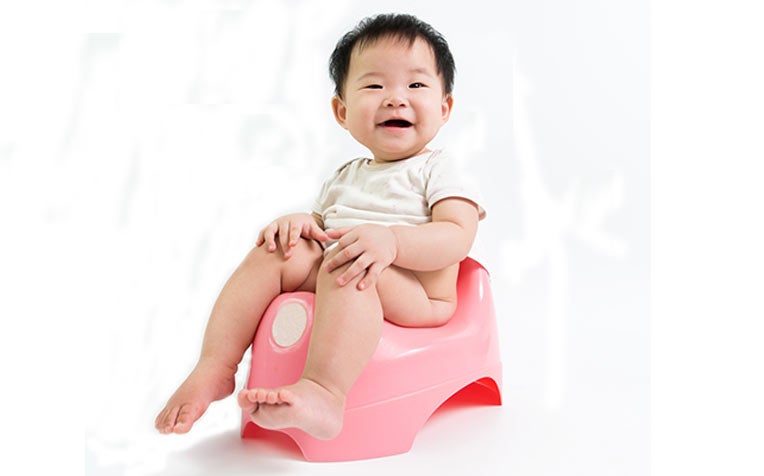
Constipation in children occurs most frequently during toilet training, with an increased prevalence in boys.
Constipation in children occurs most frequently during toilet training, with an increased prevalence in boys. Jasly Koo, Dietitian, Nutrition and Dietetics Department, and the Gastroenterology Service, from KK Women’s and Children’s Hospital, offers simple remedies to relieve constipation in children.
Average stool frequency in a child’s first week of life is estimated to be four times daily. This drops to twice per day at one year of age. By four years of age, the stool pattern resembles the adult pattern of between three times a day to three times a week.
Chronic constipation can result in poor appetite, diminished food intake and poor growth. In the most severe cases of constipation with frequent stool retention, the rectum can become insensitive to distension and (faecal incontinence) encopresis may result.
The 2010 National Institute for Health and Care Excellence (NICE) guidelines emphasise that dietary interventions alone should not be used as the first line of treatment.
“Constipation should be first treated with laxatives and a combination of age-appropriate behavioural interventions,” says Jasly Koo, Dietitian, from the Nutrition and Dietetics Department, and the Gastroenterology Service, both from KK Women’s and Children’s Hospital (KKH), a member of the SingHealth group.
Home remedies to relieve constipation in children
Use laxatives and lubricants
- Can be used as directed or prescribed. Usage of these medications as directed is
safe and does not make the bowel ‘lazy’ or the child ‘dependent’ on the medications.
- The use of
laxatives keeps the bowels empty, resulting in soft, lubricated stools. This needs to be maintained for a sufficiently long period for your child to overcome his or her apprehension about defaecation.
- Alternatively, give your child
fruits such as apples and prunes (dried or juice-form), which are high in sorbitol, to soften stools.
-
Stop medications as advised by the doctor when defaecation is consistently effortless. Faecal incontinence (or soiling of the underwear) may result from constipation and it may be mistaken as diarrhoea. This soiling is a result of liquid faeces leaking around harder faeces in the large intestine and onto the underwear. Parents should not reduce or stop the prescribed laxative therapy as this can worsen the constipation.
-
Prior to introducing a high-fibre diet, it is important for children with faecal impaction to have their bowels emptied. Otherwise, it can cause further constipation, abdominal pain and vomiting. Moreover, a high-fibre diet should also be accompanied with adequate fluid intake.
- Can be used as directed or prescribed. Usage of these medications as directed is
safe and does not make the bowel ‘lazy’ or the child ‘dependent’ on the medications.
Introduce behavioral intervention
-
Pain when passing motion, or fear of pain when passing motion, are the most common reasons for not wanting to pass motion regularly. This can then result in a cycle of withholding, and subsequent passing of hard stools.
To overcome this, encourage regular sitting on the toilet and pushing, three times a day for three to five minutes. The best time to do this is usually half an hour to one hour after breakfast as this is when the gastro-colic reflex (the body’s natural reflex in response to eating resulting in the urge to pass motion) is strongest.
Ensure that your child’s feet are supported, hips flexed and encourage ‘bulging’ of the abdomen. - Reinforcing positive behaviour with stickers on an age-appropriate chart. Rewards should be based on achievable goals (e.g. good compliance with sitting programme) instead of having clean pants or successful passage of stools).
- Numbing creams can be used if pain due to anal fissures interferes with normal bowel movements.
-
Pain when passing motion, or fear of pain when passing motion, are the most common reasons for not wanting to pass motion regularly. This can then result in a cycle of withholding, and subsequent passing of hard stools.
Read on to find out how much fibre and fluids is needed to help children relieve constipation.
Ref: N18
Contributed by


















 Get it on Google Play
Get it on Google Play